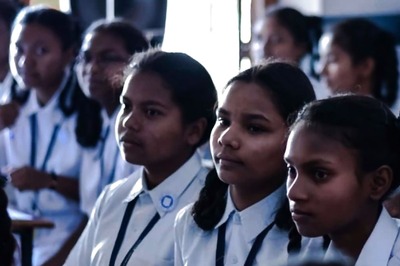
views
India is the second-largest country in the world with an extensive road network spanning 63.73 lakh kilometres. It has become a cost-effective and prominent mode of transportation, accounting for approximately 87% of all passenger traffic and over 60% of all freight traffic movement. However, amidst the benefits of this road network, the safety conditions on Indian roads remain a major concern.
According to the Road Accidents in India, 2022 report published by the Ministry of Road Transport & Highways, the country witnesses an alarming rate of accidents and fatalities. Each day, there are 1,263 accidents and 461 deaths, resulting in one death every three-and-a-half minutes. These numbers become even more worrisome when analysed annually, with a total of 4.4 lakh injuries and 1.68 lakh deaths in 2022. Two-wheelers account for nearly half, or 44.5%, of the total road crash fatalities, with pedestrians making up almost 20%.
Statistically, pedestrians and two-wheeler users are the most vulnerable citizens, facing increased risks of road accidents. Economic factors and high population density contribute significantly to these problems. Two-wheelers are the most accessible and commonly used mode of transport in India. However, in densely populated urban areas, the presence of various types of vehicles leads to unpredictable and unsafe traffic movements, particularly for pedestrians and two-wheeler users. Additionally, economic factors that make two-wheelers affordable also result in the use of unserviced or older vehicles, further increasing the risk of accidents.
Unsafe driving practices contribute significantly to the hazardous conditions faced by pedestrians and two-wheeler users in India. Reckless driving, speeding, and disregard for traffic laws and road signs not only create an unsafe road environment but also endanger the lives of more vulnerable road users.
However, the most alarming issue leading to road fatalities in India is the lack of road safety awareness among the general population. Increasing awareness among citizens is the first step towards changing driving behaviour.
Apart from adhering to fundamental road safety practices such as wearing helmets/seatbelts, following traffic rules and signals, and utilising sidewalks, addressing the larger problem requires a shift in the mindset and conduct of all drivers on the roads. Ultimately, ensuring a decline in road accidents and fatalities in India can only be achieved through a collaborative effort among common citizens, civil society, and the government.Driving such behavioural changes on a large scale would require a comprehensive and widespread initiative. This is where the second chapter of the Sadak Suraksha Abhiyan comes into play. Launched as a public awareness campaign, its primary objective is to cultivate empathy on the roads of India, raise awareness among Indian citizens about the value of human life, and promote individual behavioural change. As part of this initiative, activities have been undertaken to create positive reinforcement by rewarding safe road behaviours, which can have a significant impact on improving road safety in India.
To ensure nationwide coverage, the initiative has been expanded to include eight regional chapters, involving diverse opinion leaders and renowned celebrities to further explore the issues and challenges faced on Indian roads. Additionally, Sadak Suraksha Abhiyan 2024 has been extended to schools and colleges across the country to engage younger citizens and influence them towards a safer tomorrow.
While the Ministry of Road Transport and Highways is dedicated to improving road safety and reducing accidents in India, the responsibility for ensuring the safety of pedestrians and two-wheelers does not solely rest on the government or relevant authorities. It is crucial for individuals to come together and collectively work towards making India’s roads safer by driving responsibly, adhering to traffic rules, and prioritising the safety of all road users.



















Comments
0 comment